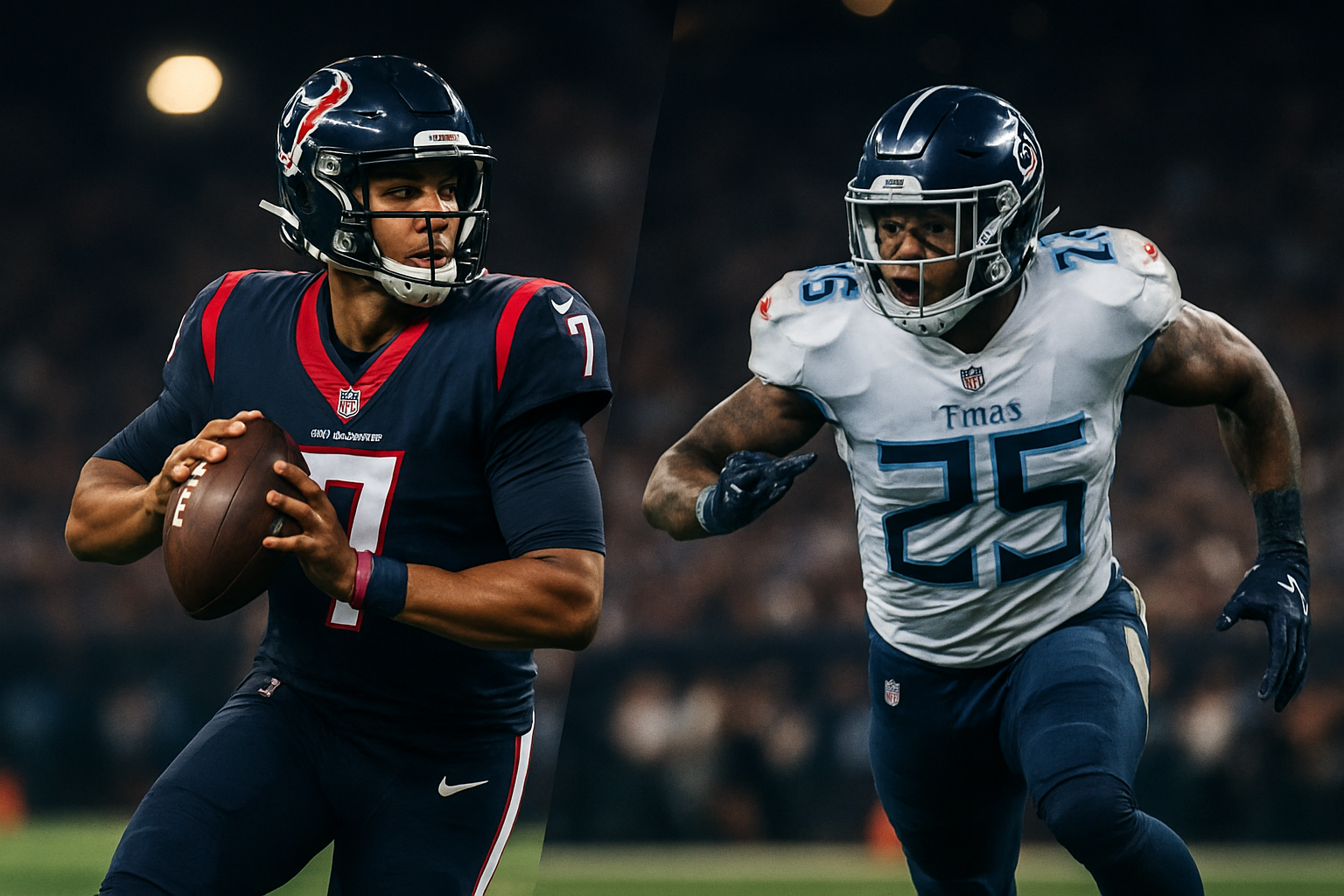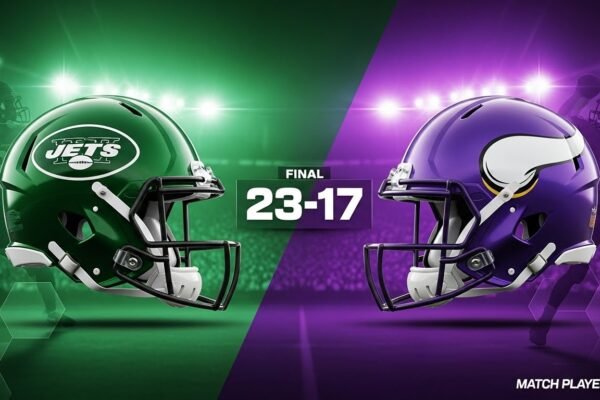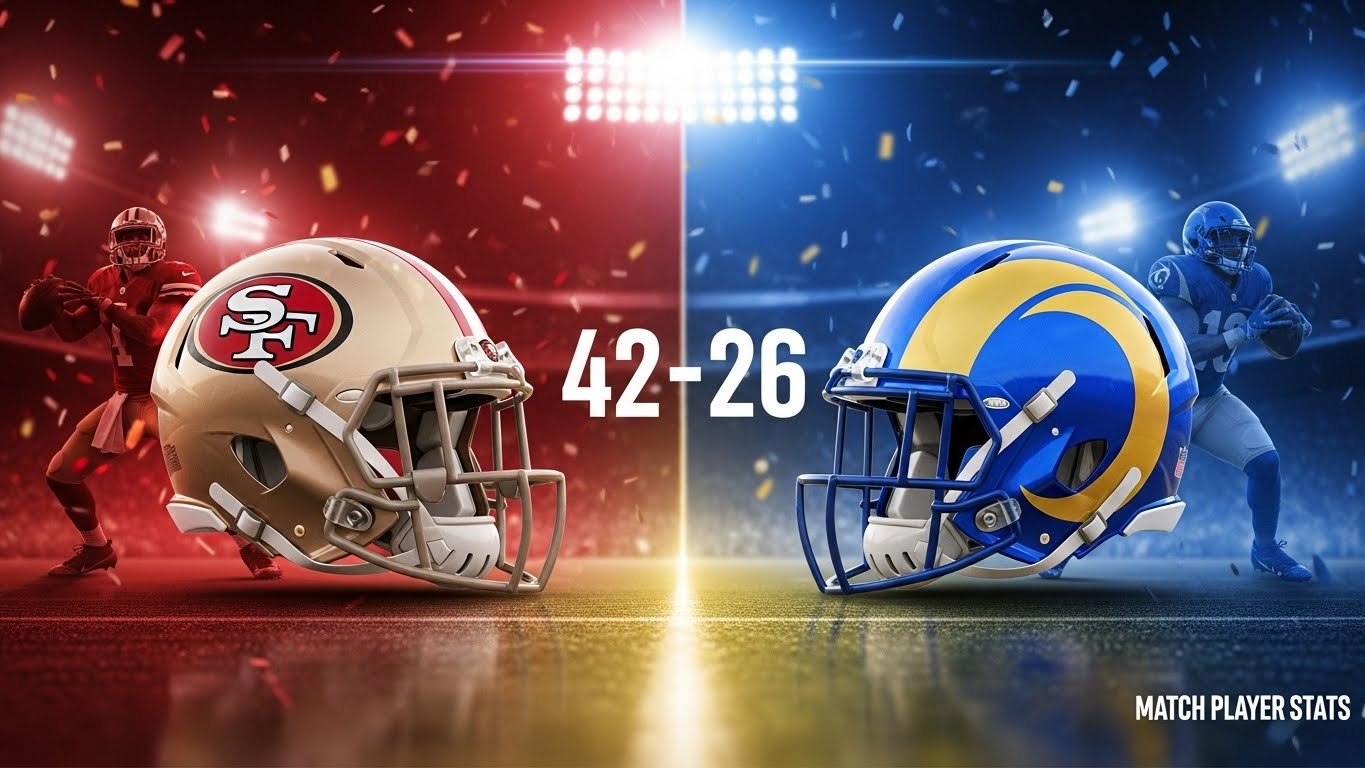

Tennessee Titans vs Houston Texans Match Player Stats (Sep 28, 2025)
The crowd of 70,398 at NRG Stadium erupted when Woody Marks found the end zone for a second time. Houston’s rookie running back had just sealed a 26-0 shutout, the Texans’ first since 2010. On the opposite sideline, Tennessee’s offense hadn’t crossed Houston’s 20-yard line all afternoon.
This wasn’t close. The Texans dominated September 28, 2025’s AFC South matchup in every measurable way. C.J. Stroud found his rhythm after three frustrating weeks. The defense harassed Cam Ward into one of the worst performances by a starting quarterback this season. Special teams won the field position battle decisively.
Tennessee fell to 0-4, their tenth consecutive loss dating back to 2024. More troubling than the losing streak: the offense generated just 175 total yards in 47 plays across 2 hours and 47 minutes. Vegas had Houston favored by 7 points with an over/under of 39.5. The game stayed well under.
Table of Contents
QUICK STATS
| Category | Tennessee | Houston |
|---|---|---|
| Final Score | 0 | 26 |
| Total Yards | 175 | 353 |
| Time of Possession | 21:39 | 38:21 |
| Third Down Conversions | 18% | 40% |
| Red Zone Trips | 0 | 2 |
| Turnovers | 1 | 0 |
Game MVP: Woody Marks (119 total yards, 2 TDs)
Turning Point: Derek Stingley Jr. INT, 4th quarter, 12:49 remaining
Key Stat: Tennessee never reached Houston’s 20-yard line
Three Plays That Decided Everything
Before breaking down individual performances, three specific moments defined this game’s outcome.
Fourth Quarter, 14:55 Remaining: Woody Marks’ First TD
Houston led just 6-0 when Stroud found Marks on a 12-yard touchdown pass. The rookie slipped into space behind Tennessee’s linebackers, caught the ball cleanly, and finally broke the scoring drought. Houston had possessed the ball for over 33 minutes but couldn’t reach the end zone until that moment. The touchdown changed everything.
Fourth Quarter, 12:49 Remaining: Stingley’s Interception
Ward dropped back facing third and 10 near midfield. Houston brought pressure. Ward forced a throw toward Elic Ayomanor. Derek Stingley Jr. read it perfectly, jumped the route, and returned the interception 20 yards to Tennessee’s 44-yard line. Three plays later, Jayden Higgins caught a 24-yard touchdown pass. Game over. The lead jumped from 12-0 to 19-0, and Tennessee’s slim comeback hopes died right there.
First Quarter, 11:44 Remaining: Slye’s First Miss
Tennessee drove into Houston territory and lined up for a 41-yard field goal attempt. Joey Slye missed wide right. On the next possession, he missed again from 43 yards. Both kicks were makeable. Both failures kept Tennessee off the scoreboard when they needed any points to build confidence. Those six missed points loom large in a shutout loss.
Quarterback Performance: Night and Day
C.J. Stroud Finds His Accuracy
Stroud’s completion percentage jumped 14 points from his season average. The second-year quarterback connected on 22 of 28 attempts, spreading the ball to seven different receivers while avoiding turnovers.
| Metric | Performance |
|---|---|
| Completions/Attempts | 22/28 (78.6%) |
| Passing Yards | 233 |
| Touchdowns | 2 |
| Interceptions | 0 |
| Yards Per Attempt | 8.3 |
| Passer Rating | 125.1 |
| Adjusted Completion % | 81% |
| Times Sacked | 2 for 9 yards |
The adjusted completion percentage of 81% strips out drops, throwaways, and batted passes. Stroud’s actual accuracy topped even his impressive raw numbers. He averaged 8.3 yards per attempt, attacking Tennessee’s secondary deep enough to keep them honest while taking what the defense gave him underneath.
Stroud completed two deep passes (20+ yards) on three attempts for 61 yards. Those vertical strikes stretched Tennessee’s secondary and opened intermediate routes. He also connected on five passes of 15+ yards for 120 total yards. When your quarterback consistently hits chunk plays, defensive coordinators run out of answers.
Both touchdowns came in the fourth quarter when Houston needed to put the game away. The 12-yard strike to Woody Marks broke a 6-0 stalemate. The 24-yard connection with Jayden Higgins pushed the lead to three scores. Stroud delivered in crucial moments after struggling to close games earlier this season.
His distribution kept Tennessee’s defense off balance. Nico Collins (79 yards), Woody Marks (50 yards), and Dalton Schultz (30 yards) all contributed. When defenses can’t key on one receiver, coverage becomes exponentially harder.
Stroud generated 128 air yards on his passes. Receivers added 108 yards after the catch. He attacked downfield for 55% of his yardage while receivers created 45% after the catch, a balanced approach that kept Tennessee’s defense guessing.
Cam Ward’s Brutal Afternoon
Tennessee’s first overall pick completed fewer than 40% of his passes. Ward connected on just 10 of 26 attempts while taking two sacks and throwing a backbreaking interception.
| Metric | Performance |
|---|---|
| Completions/Attempts | 10/26 (38.5%) |
| Passing Yards | 108 |
| Touchdowns | 0 |
| Interceptions | 1 |
| Yards Per Attempt | 4.2 |
| Passer Rating | 35.4 |
| Adjusted Completion % | 52% |
| Times Sacked | 2 for 15 yards |
Even accounting for receiver errors and defensive disruptions, Ward’s adjusted completion percentage of 52% confirms accuracy problems under pressure. His 4.2 yards per attempt average made first downs mathematically difficult. You can’t sustain drives when each completion gains barely four yards.
Ward attempted just one deep pass (20+ yards) all afternoon, completing it for 33 yards to Elic Ayomanor. That single throw gained 30% of Tennessee’s total passing yardage. Houston’s defense took away the vertical game, forcing Ward into short, ineffective throws underneath.
Tennessee completed only two passes of 15+ yards for 55 total yards. Houston connected on five such throws for 120 yards. That disparity in explosive passing plays defined the game. Modern NFL offenses need chunk yardage. Ward couldn’t deliver it.
Houston’s pass rush hit Ward repeatedly throughout the afternoon. He took visible punishment, eventually needing assistance leaving the field after absorbing multiple fourth-quarter hits. The rookie showed mobility with 22 rushing yards on two scrambles, but the constant harassment prevented any offensive rhythm.
Tennessee generated only 72 air yards on passes. Receivers managed 43 yards after catch. Ward couldn’t attack downfield, and receivers failed to create separation or make plays after the reception.
Woody Marks’ Career Day
| Category | Stats |
|---|---|
| Rushing Attempts | 17 |
| Rushing Yards | 69 |
| Yards Per Carry | 4.1 |
| Rushing TDs | 1 |
| Longest Run | 18 yards |
| Receptions | 4 |
| Receiving Yards | 50 |
| Receiving TDs | 1 |
| Total Touches | 21 |
| Total Yards | 119 |
His versatility created matchup problems Tennessee couldn’t solve. Line Marks up in the backfield, and he’s a power runner who gained 69 yards on 17 carries. Split him out wide or in the slot, and he’s a receiving weapon who caught 4 of 5 targets for 50 yards.
The 12-yard touchdown reception came on the opening play of the fourth quarter. Stroud hit him in the flat, and Marks powered through arm tackles to reach the end zone. That score broke a defensive stalemate and gave Houston their first touchdown.
His 18-yard rushing touchdown late in the fourth quarter displayed his acceleration. Marks hit the hole hard, cut back against the grain, and outran Tennessee’s pursuing defenders to the end zone. The NRG Stadium crowd erupted as Houston sealed the shutout.
Nick Chubb played 42% of offensive snaps and gained 47 yards on 13 carries. Respectable numbers, but he lacked Marks’ explosive element. The rookie played 56% of snaps, suggesting Houston’s backfield may be shifting toward the younger back.
Passing and Rushing Production: Where Games Get Won
While both teams ran the ball adequately, the passing attacks determined the outcome. Houston passed for 233 yards at 8.3 per attempt. Tennessee managed 108 yards at 4.2 per attempt. That efficiency gap made all the difference.
| Player | Carries | Yards | Avg | TDS | Long |
|---|---|---|---|---|---|
| Woody Marks | 17 | 69 | 4.1 | 1 | 18 |
| Nick Chubb | 13 | 47 | 3.6 | 0 | 11 |
| C.J. Stroud | 4 | 11 | 2.8 | 0 | 4 |
Houston’s offensive line created 1.2 yards before contact per rush. Ball carriers generated 2.4 yards after contact. The backs didn’t force a single missed tackle, relying on blocking execution and power running to accumulate 129 yards on 35 attempts.
| Player | Carries | Yards | Avg | TDS | Long |
|---|---|---|---|---|---|
| Tony Pollard | 14 | 64 | 4.6 | 0 | 21 |
| Cam Ward | 2 | 22 | 11.0 | 0 | 12 |
| Julius Chestnut | 1 | 0 | 0.0 | 0 | 0 |
Tennessee’s offensive line created just 0.5 yards before contact per rush. Backs generated 4.6 yards after contact through effort and broken tackles. Pollard and company forced four missed tackles on run plays, showing individual effort couldn’t overcome poor blocking.
Pollard’s 64 yards on 14 carries produced solid numbers in a game where Tennessee trailed early and abandoned the run. His 4.6 yards per carry topped Houston’s backs, but negative game script forced Tennessee into obvious passing situations where Houston’s pass rush thrived.
| Player | Team | Rec | Targets | Yards | Avg | TDS | Long |
|---|---|---|---|---|---|---|---|
| Nico Collins | HOU | 4 | 6 | 79 | 19.8 | 0 | 37 |
| Woody Marks | HOU | 4 | 5 | 50 | 12.5 | 1 | 20 |
| Dalton Schultz | HOU | 5 | 6 | 30 | 6.0 | 0 | 9 |
| Elic Ayomanor | TEN | 2 | 7 | 44 | 22.0 | 0 | 33 |
| Calvin Ridley | TEN | 2 | 3 | 30 | 15.0 | 0 | 22 |
| Tony Pollard | TEN | 3 | 3 | 12 | 4.0 | 0 | 8 |
Collins’ 37-yard reception wasn’t just his longest catch. That grab flipped field position and gave Houston the short field they needed for their first touchdown. When your top receiver consistently wins one-on-one matchups, defensive coordinators run out of options.
Ayomanor’s 2-for-7 performance stems from both Ward’s accuracy issues and Houston’s tight coverage. Seven targets should produce more than 44 yards. When your leading receiver catches fewer than 30% of his targets, the passing game breaks down.
Defensive Pressure: Houston Dominates the Trenches
Houston’s defense generated 21 total pressures to Tennessee’s 14. The constant harassment disrupted Ward’s rhythm and timing all afternoon.
| Player | Sacks | QB Hits | Hurries | Total Pressures |
|---|---|---|---|---|
| Danielle Hunter | 2.0 | 3 | 3 | 6 |
| Will Anderson Jr. | 0.0 | 1 | 5 | 5 |
| Mario Edwards Jr. | 0.0 | 1 | 2 | 3 |
| Team | Total Pressures | Sacks | QB Hits | Hurries |
|---|---|---|---|---|
| Houston | 21 | 2 | 5 | 14 |
| Tennessee | 14 | 2 | 1 | 11 |
Danielle Hunter recorded both sacks on Ward, accounting for 15 yards lost. His constant pressure forced Ward into hurried decisions throughout the game.
Will Anderson Jr. didn’t record a sack but pressured Ward on five dropbacks. Those hurries disrupted timing routes and forced checkdowns. Pressure without sacks still wins games.
Houston registered seven pass deflections compared to Tennessee’s one. Active hands in coverage combined with consistent pass rush created an impossible situation for Ward.
Stingley’s Game-Sealing Interception
Derek Stingley Jr. read Ward’s eyes on third and 10 near midfield. Houston brought pressure. Ward forced a throw toward Elic Ayomanor. Stingley jumped the route, intercepted the pass, and returned it 20 yards to Tennessee’s 44-yard line.
Three plays later, Stroud found Jayden Higgins for a 24-yard touchdown. The lead jumped from 12-0 to 19-0. Tennessee’s comeback hopes died right there.
Tennessee’s Defensive Fight
Despite the loss, several Titans defenders posted strong tackle numbers. Cedric Gray led all players with 17 total tackles, though high linebacker totals usually mean ball carriers are reaching the second level too frequently.
| Player | Tackles | Solo | Assists | Sacks | TFL |
|---|---|---|---|---|---|
| Cedric Gray | 17 | 10 | 7 | 0.0 | 1 |
| Cody Barton | 9 | 6 | 3 | 0.0 | 0 |
| Jeffery Simmons | 5 | 4 | 1 | 1.0 | 4 |
| Amani Hooker | 5 | 3 | 2 | 0.0 | 0 |
Jeffery Simmons dominated individually with four tackles for loss and a sack. His disruption kept the game close through three quarters. But one defensive tackle can’t carry an entire unit for 60 minutes, especially when the offense keeps sending them back onto the field.
Source: Pro Football Reference Box Score
Special Teams: Field Goals Decide First Half
Ka’imi Fairbairn provided all of Houston’s first half scoring with field goals from 47 and 43 yards. Joey Slye missed both field goal attempts for Tennessee, failing from 41 and 43 yards.
| Kicker | Team | FG Made/Att | Long | XP Made/Att | Points |
|---|---|---|---|---|---|
| Ka’imi Fairbairn | HOU | 2/3 | 47 | 2/2 | 8 |
| Joey Slye | TEN | 0/2 | 0 | 0/0 | 0 |
Fairbairn’s 47-yarder came after Tennessee’s opening kickoff fumble gave Houston prime field position. His 43-yard kick early in the second quarter extended Houston’s lead to 6-0. Those six points made up the entire margin through three quarters.
Slye’s misses potentially cost Tennessee six points. Both kicks sailed wide right from makeable distances. In a game where Tennessee got shut out, those missed opportunities loom large.
Efficiency Metrics: The Numbers Behind the Blowout
Expected Points Added (EPA) measures how much each play increases or decreases scoring probability. The gap was enormous.
| Metric | Tennessee | Houston |
|---|---|---|
| Yards Per Play | 3.8 | 5.2 |
| Yards Per Pass Attempt | 3.6 | 8.0 |
| Completion Percentage | 38.5% | 78.6% |
| Red Zone Trips | 0 | 2 |
| Red Zone Efficiency | N/A | 100% |
| Average Drive Yards | 16.6 | 34.2 |
| Average Points Per Drive | 0.0 | 2.6 |
| EPA Per Play | -0.356 | +0.134 |
Tennessee’s negative 0.356 EPA per play means they lost more than a third of an expected point every time they ran an offensive snap. Houston’s positive 0.134 EPA confirms they added value on average with each play.
Houston averaged more than double Tennessee’s yards per drive (34.2 vs 16.6). Each possession became a legitimate scoring threat for Houston. Each Tennessee drive became an exercise in frustration.
Tennessee never reached the red zone across eight possessions and 47 offensive plays. You can’t score touchdowns if you can’t threaten the end zone. Houston scored on both red zone trips, perfect efficiency when it mattered most.
Fourth Quarter Explosion
The game stayed within reach at 6-0 through three quarters. Houston then scored 20 unanswered points in the final period, breaking Tennessee’s resistance.
| Quarter | Time | Team | Play | Score |
|---|---|---|---|---|
| 1st | 4:49 | HOU | Fairbairn 47-yard FG | 3-0 |
| 2nd | 13:28 | HOU | Fairbairn 43-yard FG | 6-0 |
| 4th | 14:55 | HOU | Marks 12-yard TD pass from Stroud (2pt failed) | 12-0 |
| 4th | 9:26 | HOU | Higgins 24-yard TD pass from Stroud (Fairbairn XP) | 19-0 |
| 4th | 4:51 | HOU | Marks 18-yard TD run (Fairbairn XP) | 26-0 |
The failed two-point conversion after Marks’ first touchdown barely mattered. Houston executed in crucial moments while Tennessee repeatedly stalled, exposing the gap between these teams.
Woody Marks scored both fourth quarter touchdowns. His receiving touchdown broke the scoring drought. His rushing touchdown sealed the shutout. The rookie delivered when Houston needed him most.
Impact on Both Teams Moving Forward
Houston Discovers Offensive Identity
Houston’s offense finally clicked after three weeks of struggles. The 26 points matched what they scored in the previous three games combined. Woody Marks gives them a versatile weapon who can hurt defenses as both a runner and receiver.
Stroud’s efficient performance suggests the passing game may be turning a corner. His 78.6% completion rate and 8.3 yards per attempt mark significant improvements over early season struggles.
The defense held Tennessee to 3.8 yards per play while generating constant pressure and a crucial interception. Against better offenses, this unit has the tools to compete.
Back in January, Houston suffered a playoff loss to Kansas City where they outgained the Chiefs by 124 yards but couldn’t finish drives and allowed constant pressure. Those same issues plagued them through September’s first three weeks. The improvement shown here offers hope those problems can be solved.
Tennessee’s Crisis Deepens
Tennessee’s 0-4 start marks their worst beginning since the franchise’s early Tennessee days. This is their first shutout since 2019 and extends a losing streak to 10 games spanning back to the 2024 season.
Head coach Brian Callahan’s job security is now a legitimate question at 3-18 overall. When your offense scores zero points and never reaches the red zone, systemic problems extend beyond individual player struggles.
After the game, Callahan addressed the media with visible frustration. “We went backwards on offense,” he said. “We had penalties, we had a million issues, quarterback hits, all those things. Not good enough. We didn’t do a good enough job to do anything in the second half worthwhile. It’s frustrating. Got to find an answer.”
In the locker room, defensive tackle Jeffery Simmons didn’t mince words. “We are playing bad football, it’s simple,” he said. “I’m tired of hearing the same thing coming in the locker room, and I am tired of saying it, that we have to play better. I am tired of saying that. This is the NFL and they wanted it more than us, they played like they wanted it more than us. We are not playing good right now. It is frustrating as hell.”
Cam Ward’s development becomes paramount. The first overall pick needs better protection and more weapons, but he also needs to improve accuracy under pressure. His 35.4 passer rating and constant harassment point to multiple issues that won’t fix themselves quickly.
These offensive collapses aren’t new. During the 2024 season against Buffalo, Tennessee managed just 72 yards in the second half despite controlling possession. The franchise continues searching for answers to problems that transcend individual games or seasons.
Tennessee travels to Arizona in Week 5, desperately needing any offensive production. Changes must come quickly, whether through personnel adjustments, scheme modifications, or bigger coaching decisions. You don’t score zero points without addressing every aspect of your operation.
Frequently Asked Questions
Who won the Tennessee Titans vs Houston Texans game in Week 4 2025?
The Houston Texans defeated the Tennessee Titans 26-0 on September 28, 2025 at NRG Stadium in Houston, Texas. The shutout marked Houston’s first win of the season and their first shutout victory since 2010.
What were Woody Marks’ stats against the Titans?
Rookie running back Woody Marks recorded 119 total yards from scrimmage on 21 touches. He rushed 17 times for 69 yards and one touchdown while catching 4 passes for 50 yards and another touchdown. Both scores came in the fourth quarter.
Why did the Titans get shut out?
Tennessee’s offense never reached the red zone, managed only 3.8 yards per play, and quarterback Cam Ward completed just 38.5% of passes while taking two sacks for 15 yards lost. Kicker Joey Slye also missed two field goals in the first half.
How many sacks did Cam Ward take?
Cam Ward was sacked two times by Houston’s defense, losing 15 yards. Danielle Hunter recorded both sacks. The constant pressure from Houston’s defensive line disrupted Tennessee’s passing attack throughout the game.
What was C.J. Stroud’s passer rating?
C.J. Stroud posted a 125.1 passer rating, completing 22 of 28 passes (78.6%) for 233 yards and two touchdowns with no interceptions. His adjusted completion percentage of 81% was even higher when accounting for drops and throwaways.
Did Tennessee reach the red zone?
No. Tennessee never advanced the ball inside Houston’s 20-yard line during the entire game across eight possessions and 47 offensive plays. Their deepest penetration reached Houston’s 24-yard line before a sack pushed them backward.
Source: Sports Illustrated Takeaways
Final Analysis
Houston dominated Tennessee through offensive efficiency, defensive pressure, and special teams execution. C.J. Stroud’s accuracy (78.6% completion rate), Woody Marks’ versatility (119 total yards, 2 TDs), and a defense that generated 21 pressures combined to create Houston’s breakthrough performance.
For Tennessee, every statistical category exposes dysfunction. Ward’s 35.4 passer rating, the offense’s failure to reach the red zone, Slye’s two missed field goals, and the defense surrendering 20 fourth-quarter points all contributed to the shutout loss.
The stats from this September 28, 2025 matchup chronicle Houston’s first victory and Tennessee’s continued spiral. The Texans finally found offensive rhythm while their defense delivered a historic shutout. The Titans continue searching for answers to problems that have plagued them for 10 consecutive games.
Houston improved to 1-3 with momentum building. Tennessee fell to 0-4 with systemic issues demanding immediate solutions. The gap between these AFC South rivals has never looked wider.







